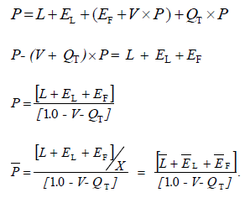Difference between revisions of "Werner07.OtherExpenses"
(→In Plain English!) |
|||
| Line 159: | Line 159: | ||
You can practice a slightly harder variation of this problem in the quiz. | You can practice a slightly harder variation of this problem in the quiz. | ||
| − | [https://www.battleacts5.ca/FC.php?selectString=**&filter=both&sortOrder=natural&colorFlag=allFlag&colorStatus=allStatus&priority=importance-high&subsetFlag=miniQuiz&prefix=Werner07&suffix= | + | [https://www.battleacts5.ca/FC.php?selectString=**&filter=both&sortOrder=natural&colorFlag=allFlag&colorStatus=allStatus&priority=importance-high&subsetFlag=miniQuiz&prefix=Werner07&suffix=OtherExpenses§ion=all&subSection=all&examRep=all&examYear=all&examTerm=all&quizNum=1<span style="font-size: 20px; background-color: aqua; border: solid; border-width: 1px; border-radius: 10px; padding: 2px 10px 2px 10px; margin: 10px;">'''mini BattleQuiz 1]'''</span> |
===Underwriting Expense Categories=== | ===Underwriting Expense Categories=== | ||
Revision as of 00:47, 20 October 2020
Reading: BASIC RATEMAKING, Fifth Edition, May 2016, Geoff Werner, FCAS, MAAA & Claudine Modlin, FCAS, MAAA Willis Towers Watson
Chapter 7: Other Expenses and Profit
Pop Quiz
Study Tips
BattleTable
Based on past exams, the main things you need to know (in rough order of importance) are:
- fact A...
- fact B...
reference part (a) part (b) part (c) part (d) E (2019.Fall #6) Werner06.LossLAE profit provision
- investment incometrending
- necessary when...E (2019.Spring #6) total expense ratio
- all expenses variablevariable permissible LR:
- calculatedistortions
- due to expense ratiovariable permissible LR:
- calculateE (2018.Fall #6) premium-based method
- versus exposure-basedpremium-based method
- versus exposure-basedE (2018.Spring #7) Excel Practice Problems E (2017.Fall #7) premium-based method
- U/W expense ratiopremium-based method
- operating expense ratiototal permissible LR
- calculateWerner08.Indication 1 E (2017.Spring #2) Werner05.Premium variable expense ratio
- for U/W profit 5%Werner05.Premium Werner05.Premium E (2017.Spring #4) expense ratio
- C&B, generalpermissible LR
- calculateU/W profit provision < 0
- is profit possible?U/W profit expectations
- met / not metE (2016.Fall #6) expense provision
- actuary's approachexpense provision
- alternative approachE (2016.Spring #7) premium-based method
- indicated average rateachieve target profit
- without changing rates?E (2014.Fall #6) variable expense method
- indicated average ratepremium-based method
- indicated average rateexcessive or inadequate
- indicated average rateE (2013.Fall #7) premium-based method
- versus exposure-basedpremium-based method
- versus exposure-basedE (2013.Fall #12) pricing strategy
- evaluateE (2013.Spring #9) Werner08.Indication 1 expense provision
- fixed vs variableexpense provision
- fixed vs variable
In Plain English!
Intro
Recall the Fundamental Insurance Equation:
- premium = (Losses + LAE + U/W Expenses) + U/W profit
Our goal in a ratemaking analysis is to estimate each of these components for the period when the proposed rates will be in effect. We learned how to do this for premium in Chapter 5 and for losses and LAE in Chapter 6. In this chapter, we're going to do the same thing for U/W Expenses and U/W profit. (We'll also take another quick look at how reinsurance fits into the big picture.)
A Simple Example
Click Notation - Pricing for a full list of the notation used in Werner. This example looks more complicated than it really is because of all the notation but once you get past that, it's just simple algebra. The notation we need in this section is as follows. Note that total exposures is denoted by X:
- P, P → Premium, Average premium (P divided by X)
- L, L → Losses, Pure Premium (L divided by X)
- EL, EL → Loss Adjustment Expense (LAE), Average LAE per exposure (EL divided by X)
- EF, EF → Fixed underwriting expenses, Average underwriting expense per exposure (EF divided by X)
For the above variables, the total dollar amount is listed first and the average dollar amount is listed second. The average amount equals the total divided by total exposures X.
- V → Variable expense provision (EV divided by P)
- QT → Target profit percentage
This is going to be your very first rate indication. Use the Fundamental Insurance Equation to calculate the average premium the insurer must charge.
- L + EL = $180 (average Loss + LAE)
- EF = $20 (fixed U/W expenses)
- V = 15% (includes premium taxes and other things)
- QT = 5% (target profit percentage)
The target profit percentage is the compensation an insurer receives for taking on the risk. In a bad year they would make less than 5%; in a good year, more. Over a longer time period, it should average out to 5%. (This doesn't include investment income.) We're going write the Fundamental Insurance Equation using this notation then solve for P. Note that in the last step, we divide both sides by X to switch from total dollar amounts to average dollar amounts.
Now just substitute the given values into the final formula:
- P = ($180 + $20) / (1.0 - 0.15 - 0.05) = $250
You can practice a slightly harder variation of this problem in the quiz.

